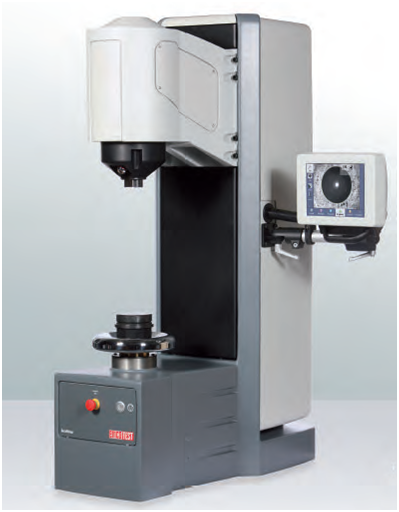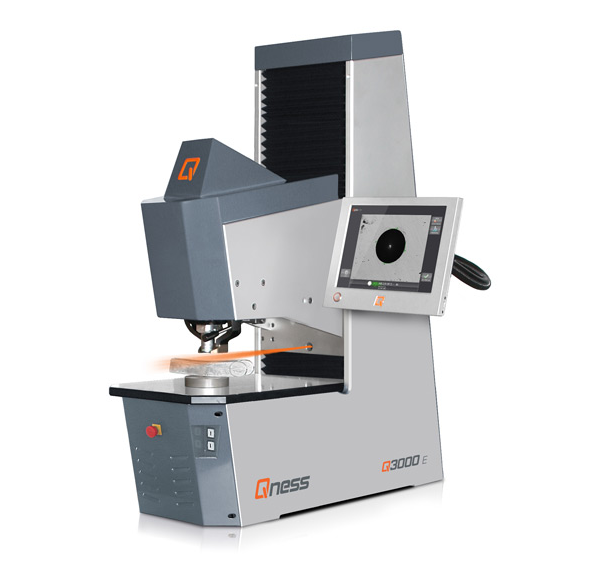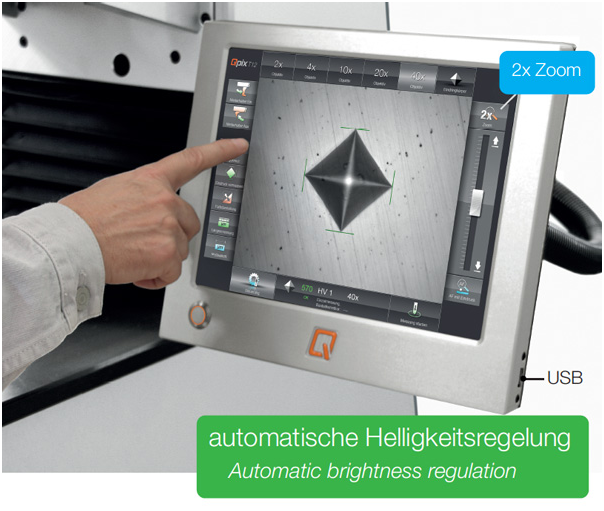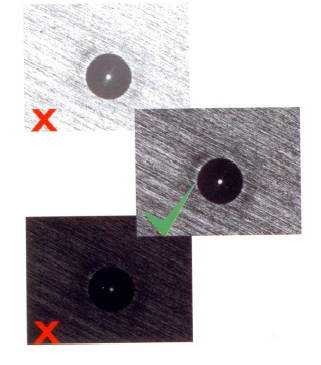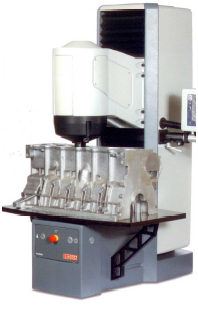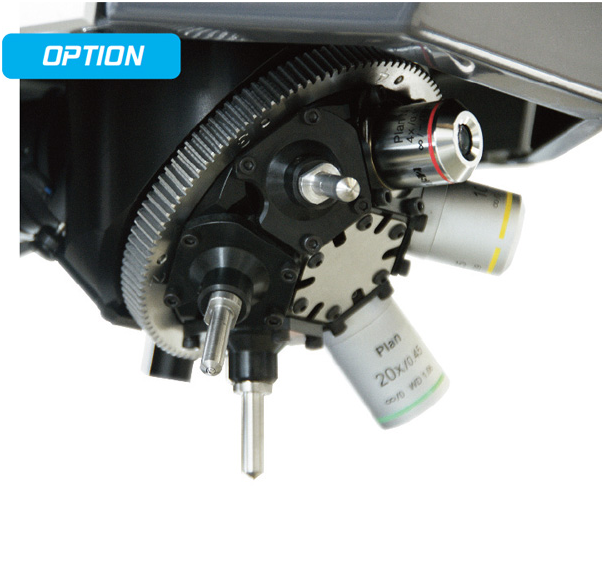Macro hardness testing machine
Equipment for measuring the hardness of the macro structure by conventional (for example, according to Brinell, Vickers, Rockwell) hardness testing (Fig. 1 and 2, see also Macro hardness). The test loads may range between 1 and 3,000 kg.
An important factor for the accuracy of the test result is the measurement of the test impression. Exact results can only be ensured by perfectly visible test impressions with optimum contrast and ideal light conditions. In modern machines, the electronic system of the camera controls the image ratios independently from the operator and ensures optimum visibility. Particularly for tests of unpolished surfaces, these functions are required for automatic, operator-independent impression detection (Fig.3 and 4).
The automatic focus is based on the principle of direct force measurement at which the integrated load cell registers exactly when the indentor comes into contact with the surface. This way, the focusing plane is already detected during the test sequence.
In fully automatic test cycles, the measurement starts directly after clamping of the workpiece. After the measurement, the workpiece is automatically released. This is particularly important for series tests as it enables enormous time savings.
Optional extension of the test bench enables secure clamping of heavy parts for testing of points on the very edges (Fig. 5).
The testing machine illustrated in Fig. 2 supports several test methods. Fig. 6 illustrates an example of 3 different attached enlarging objective lenses with the respective indentors for Brinell, Vickers or Rockwell hardness testing.
Additional references:
Hardness comparative table
Hardness stress
Micro hardness
Relative hardness
uneven hardness
Tensile strength/Hardness quotient
